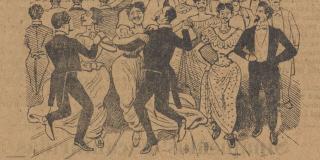The New York Public Library provides its patrons free access to a vast and varied collection of rare and unique research materials that document the lives and work of historical and living LGBTQ+ people. With books, maps, and pamphlets, and hundreds of archival collections that include letters, photographs, posters, original artwork, video tapes, and more, NYPL's Research Collections together constitute one of the richest repositories for the study of LGBTQ+ history in the world. As part of our celebration of Pride Month, the Library here presents an array of thought-provoking items from LGBTQ+ history selected from the collections held at the Stephen A. Schwarzman Building.

Marsha P. Johnson hands out flyers for support of gay students at N.Y.U., 1970. Photo by Diana Davies.
For people in LGBTQ+ communities, being seen can sometimes be dangerous—yet being visible is a crucial aspect of achieving equal rights and fighting discrimination. Pride Month can be an opportunity for LGBTQ+ people to celebrate gains in the fight for equality in a range of public and self-affirming ways—yet the most fundamental rights afforded LGBTQ+ Americans have been based on a right to privacy.
The lives of people who might today identify as LGBTQ+, more than those of others, have often historically been shaped by questions of visibility (being seen) and privacy (not being seen). In this digital exhibition—which was accompanied by an in-person Open House event at The New York Public Library—we examine a selection of remarkable items from the Library’s collections and ask, in the context of each piece: What does it mean to be seen, or not to be seen?
What does it mean to be seen?
The following galleries each present a selection of remarkable items from the NYPL Research Collections in consideration an aspect of LGBTQ+ visibility. Some materials represent instances of being seen as efforts to connect to community, or engage in artistic self-expression, or assert rights and freedoms—others address historical moments when being seen caused what were then considered scandals.
Highlights from the Exhibition





More Exhibitions
-
A Century of The New Yorker
February 22, 2025–February 21, 2026Stephen A. Schwarzman BuildingThis exhibition will survey 100 years of life at The New Yorker, bringing to life the people, stories, and ideas…







